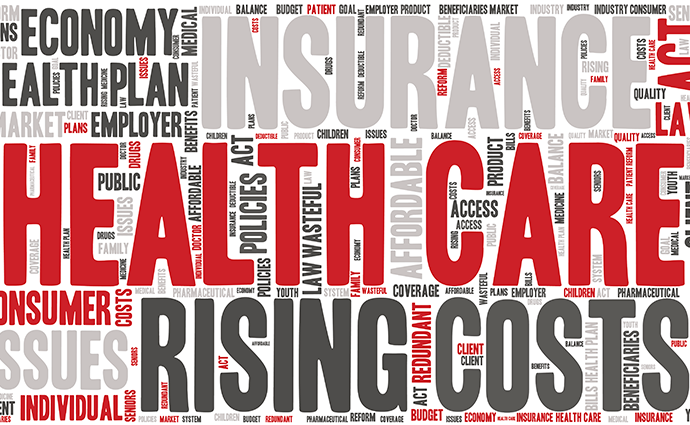Healthcare Spending Slated to Increase 5.5% Annually Until 2027
Higher prices and greater Medicare expenditures are going to accelerate the rate of national healthcare spending growth in the next decade, CMS actuaries project.

Source: Thinkstock
- National healthcare spending increased by approximately 4.4 percent in 2018, and the rate of growth is slated to significantly rise over the next decade, according to a new report from the Office of the Actuary at CMS.
The report, published in Health Affairs, reveals that national healthcare spending is projected to increased by an average of 5.5 percent annually from 2018 to 2027, reaching almost $6 trillion by the end of the period.
Actuaries predict the growth in national healthcare expenditures to outpace the anticipated growth in gross domestic product (GDP) by 0.8 percentage points during the same period. Consequently, healthcare’s share of GDP is slated to rise from 17.9 percent in 2017 to over 19 percent by 2027.
Other key findings from the analysis include:
- Out-of-pocket expenditures slated to grow at an average rate of 4.8 percent from 2018 to 2027, accounting for 9.8 percent of total spending by the end of the period (down from 10.5 percent in 2017)
- Prescription drug spending growth projected to accelerate to an average of 5.6 percent from 2018 to 2027 due to greater utilization
- Hospital spending growth expected to average 5.6 percent from 2018 to 2027, driven by greater expected growth in Medicare and Medicaid spending despite slower projected growth in private healthcare insurance
- Physician and clinical service spending estimated to grow by an average of 5.4 percent annually from 2018 to 2027, largely because of rising prices
“As a result of economic and demographic trends, we expect health spending growth to increase over this next decade,” Andrea Sisko, an economist in the Office of the Actuary at CMS and lead author of the Health Affairs study, stated in a press release. “While Medicare spending is expected to accelerate the fastest among payers and contribute to the increase, growth in health prices and disposable personal income are also significant contributors.”
As Sisko pointed out, price growth for healthcare goods and services is expected to drive greater healthcare spending in the next decade.
Actuaries project healthcare prices to increase by an average of 2.5 percent per year during the period and account for almost one-half of projected personal healthcare spending growth. Personal healthcare spending growth is projected to average 5.5 percent per year from 2018 to 2027.
In contrast, use and intensity of healthcare services is slated to increased by just 1.7 percent each year during the timeframe, accounting for under one-third of personal healthcare spending growth. Population growth and demographic changes will drive the remaining growth.
Actuaries noted that medical price growth is expected to outpace economy-wide inflation by 2020, while the rate of use and intensity growth will be less than during coverage expansion years (2014 to 2016) and the period before the last recession (1990 to 2007).
Additionally, actuaries anticipate enrollment shifts from private health insurance to Medicare to contribute to accelerated national healthcare spending growth.
Medicare spending growth will exceed that of other public and private payers, the report states. Medicare spending growth increased two percentage points to 5.9 percent in the last year alone.
Overall, actuaries project Medicare spending growth to average 7.4 percent from 2018 to 2027, representing the fastest rate among major payers.
In contrast, Medicaid and private payer spending is expected to increase by an average of 5.5 percent and 4.8 percent, respectively.
Medicare is going to have to spend significantly more compared to other major payers because of greater enrollment projections. As baby boomers continue to rapidly age into Medicare, the large public payer is slated to experience “strong enrollment growth.”
The report states that Medicare enrollment is projected to increased from 58.7 million beneficiaries in 2018 to 73.5 million beneficiaries by 2027.
Medicare enrollment is slated to grow by 9.1 beneficiaries during the period, and private health insurance enrollment is expected to increase by just 4.7 beneficiaries.
